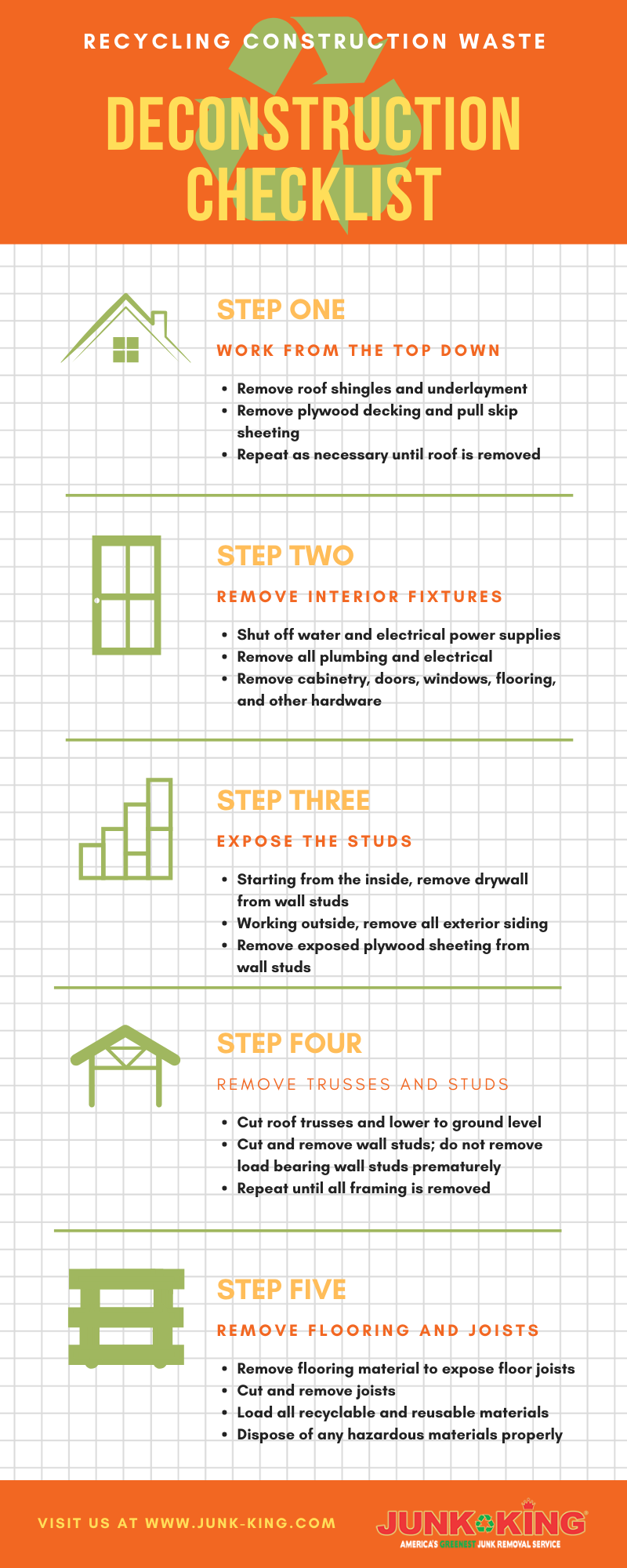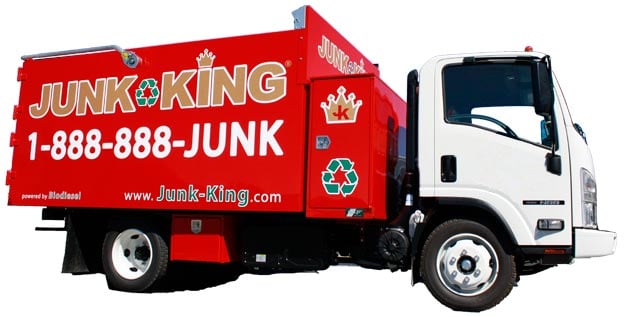.jpg?width=1000&name=Depositphotos_166798532_s-2019%20(2).jpg)
Construction waste removal can be complicated. Being green with your construction debris means changing how you go about disposal.
As a contractor, you already know that construction projects can create large amounts of debris. And this is especially true for those projects that involve demolition first. However, you may not be aware how much of the waste material in that debris can be recycled, repurposed or reused in some form or another.
The short answer is, "A lot!"
Getting a Handle on Construction Waste Removal
Because materials such as concrete debris, for example, are durable and possess great potential for reuse, they are great candidates for salvaging for reuse and recycling.
You may have a good idea of what makes up all the debris and waste that's generated on your job sites. But exactly how much of the total waste produced from construction comes from residential versus commercial, or construction versus demolition?
 Well, here's a breakdown of the average proportions of construction and demolition (C&D) debris:
Well, here's a breakdown of the average proportions of construction and demolition (C&D) debris:
- 6 % from residential construction
- 3% from non-residential construction
- 11% from residential demolition
- 39% from non-residential demolition
- 22% from residential renovation
- 19% from non-residential renovation
It may not be surprising to contractors that almost 40 percent of all the C&D waste generated in the U.S. comes from commercial demolition projects.
However, it may be surprising that almost a third of all C&D debris comes from the smaller residential renovation and demolition projects. And the good news is that most of that type of debris can be reused or recycled.
The key is to purposely engage in selective "deconstruction" as opposed to demolition. This means intentionally dismantling and preserving as much of the building materials and fixtures as possible.
Yes, it's a bit more time-consuming and more labor intensive that simply knocking out walls and ripping up floors. But the benefits and both environmentally beneficial and economically sound.
With that in mind, we've created this handy checklist to help you with your next deconstruction project.

Share this Image On Your Site
Is Green Construction Waste Removal Worth the Effort?
By taking a green approach to construction debris, you not only make debris removal easier on yourself and contribute to the health of the environment, but you can even make some money!
Here are a few tips for strategically salvaging reusable construction waste materials:
- Instead of creating a pile of mixed waste materials and debris, separate and salvage useful materials instead, such as lumber, fixtures, hardware, and appliances.
- For an existing home you can use deconstruction methods: the systematic and careful removal of materials from structures for reuse.
- There are numbers of resources that collect or purchase used and salvaged building materials, as well as nonprofit organizations that accept used building materials.
If it can'be reused it can most likely be recycled.
Almost all of the construction waste materials from a house can be recycled at facilities that provide this service:
- lumber can be recycled into reclaimed or composite wood products as well as mulch and other related products. (Note: wood from decks, roofing or other outdoor applications likely treated with chromated copper arsenate (CCA) should NOT be reused, recycled or burned.)
- Asphalt, masonry, concrete, and rubble can be recycled into aggregate or new asphalt and concrete products.
- Metals, including steel, copper, and brass, are valuable commodities to recycle, especially in light of the current market for certain metals.
Recycling and re-purposing of construction waste really does make a difference.
It's been estimated that the amount of landfill space not used because of recycling construction waste would be over 4, 300 acres at a depth of 50 feet, or more than three billion square yards of landfill each year!
Junk Hauling from Real Professionals for Your Construction Waste
Construction waste removal and site clean-up might be considered “part of the job” for contractors, bit it really doesn’t have to be. In fact, when you add up every hour your crew spends picking up debris, cleaning the site, and hauling and disposing of the material, it can be quite a bit of hours NOT spent working on your project.
And the bigger the job, the more those lost hours add up.
When you add to that the possible costs of required training for your employees, then the long-term cost benefits of outsourcing the work become more attractive.
Do you have a current or upcoming project that will need construction trash clean-up and removal? If so, call Junk King! Our team specializes in construction trash removal. We can be at your facility in mere minutes, so call us today! Our crew is fully insured and well-trained, so you can trust them to get rid of your unwanted items in a professional and courteous fashion.
And one of the best things about hiring Junk King is that we recycle a much of the material we pick-up. This is proof of our commitment to being an eco-friendly removal service. If you have questions about what we do or what we believe, give us a call at 1-888-888-JUNK (5865)



